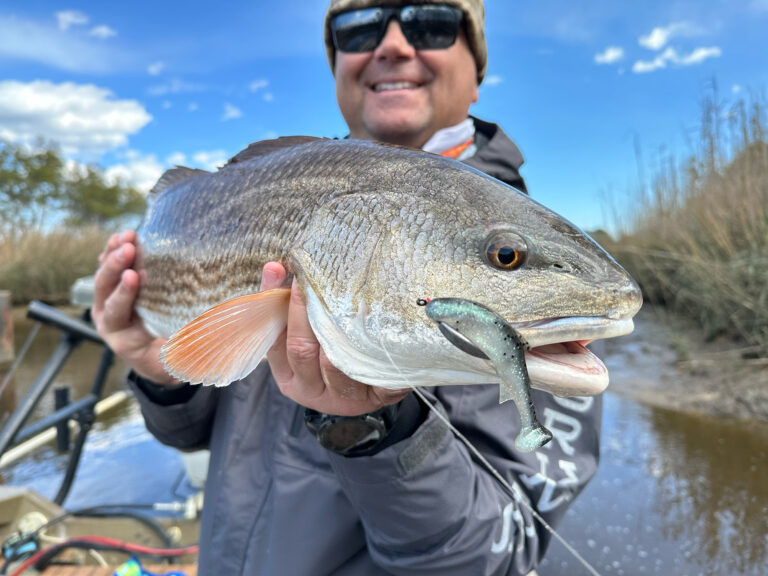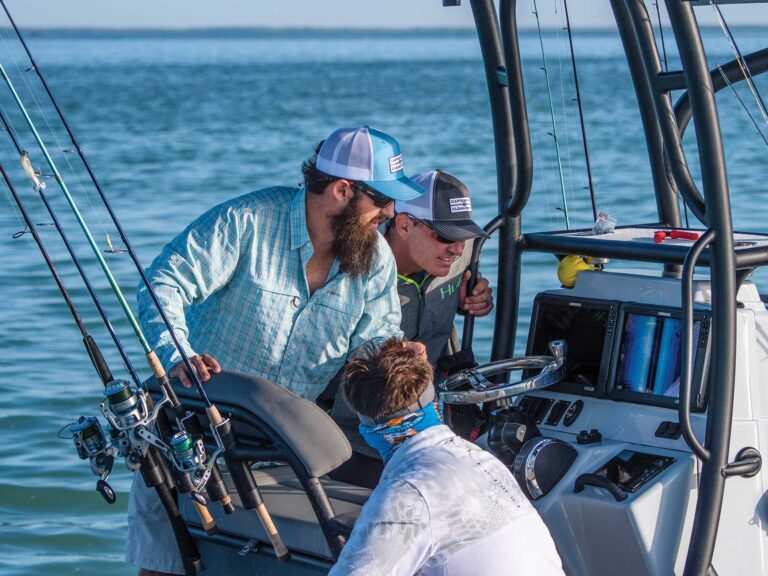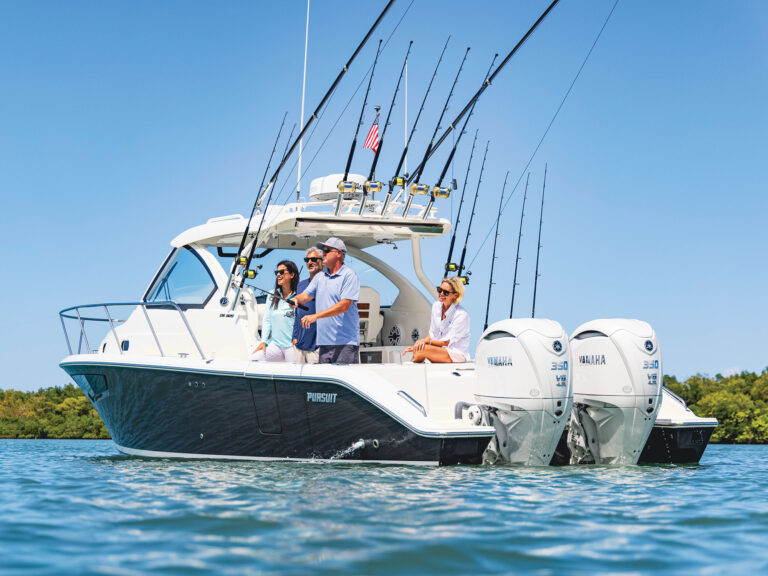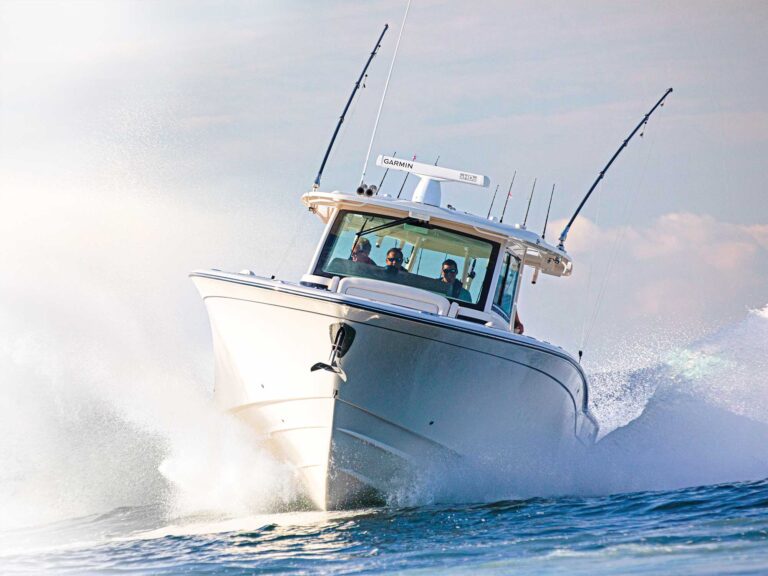Having been actively involved in the pursuit of billfish on the fly in Papua New Guinea and Australia for more than 10 years as an angler and crewman with acknowledged fly specialist Capt. Craig “Sparrow” Denham, I’ve been close to each new development of the sport as it has mushroomed here. In my fly-fishing hours with Denham, we’ve teased hundreds of billfish to the back of the boat, and now after many trials and many errors, we are seeing an increasing percentage of them hooked.
Each encounter has been a learning experience providing live-action reference data for understanding billfish behavior and for honing new tactics to catch them. This “fish and learn” approach paid dividends this March 1988 when two of our clients bagged four fly-fishing world records for striped and black marlin while fishing out of Port Stephens in the southeast state of New South Wales.
As anyone who has even a passing connection with the sport knows, catching a billfish on fly is a team effort and a numbers game. Each player has a vital role to fill, and you need to get the shots to get results. General reckoning dictates that you’ll need to tease up at least 20 fish behind the boat to catch one.
Based on thousands of hours of experience, Denham and I believe those odds can be shortened considerably by focusing closely on the way the fish are teased. Rapid, mechanical teamwork is vital for success, and when performed well, we have found that the right teasing procedure orchestrates the best possible bite and therefore the most solid hookup.
How It Works
Each year, Capt. Denham fishes for marlin from one end of Australia to the other. In recent years, a growing number of his 200 annual charter days have been spent trolling teasers for fly-rod shots. He is a master of the subtle nuances of all big and small billfish, and his speedy “reading” of a raised fish is the initial link in the chain of teasing procedures for a secure hookup.
Billfish feeding methods are reasonably predictable. They select their target, strike it with the bill to slow it or kill it, and then as the dead or wounded prey begins to sink, the billfish casually sucks it down. The teasing game begins the moment your bait is struck by a bill. With no hooks to spook him, the fish usually sticks around to finish the job. After the first strike, it’s expecting the prey to slow down or sink but is instead confronted with a still-intact and fast-moving bait. This confuses and enrages the fish and often causes it to pursue the bait with increased vigor. The switch has been turned on.
Deck-side, the team springs into action. One crew member picks up the active teaser rod while the other teasers are cleared. As the fish zeroes in on the bait, the teaser is carefully manipulated back to the boat. Ideally, the bait is kept just ahead of the fish, with the retrieve speed determined by the moves of the fish. Some crews believe that the fish shouldn’t be allowed to hit the teaser at any time, but from our experience, an aggressive fish will nearly always get the teaser if he really wants it. The way we see it, if he won’t hit the teaser, he usually won’t eat the fly.
With the fish moving quickly, darting in a confused state to within 30 feet of the boat, the angler is ready to make his cast. At this point, the skipper calls “neutral” (an IGFA requirement before the cast can be made), and the teaser is jerked from the water. The angler casts to a spot within a few feet to the right and a few feet back from where the teaser left the water (left of the teaser if the caster is left-handed).
By this time the fish should be madder than a junkyard dog and ready to pounce on anything that hits the water. If everything goes right the fish will spin around to look for the teaser and the fly will catch his eye. The fly should remain near motionless, sinking slowly with as little drag as possible. If the switch has been made correctly, the fish will see a sinking “prey” that has at last died from his repeated attacks and will take the fly going away from the boat.
Making the Switch
Many crews advocate the use of popper-headed flies, which are stripped back to the boat after the switch is made. From what we’ve witnessed, a teased-up billfish commonly reacts to the moving, popping fly by getting in behind it and striking it repeatedly with its bill. With head-on, bill-swiping bites, chances of a hookup are marginal because when the fish feels the point of the hook in the bill, his most common reaction is to violently shake his head. Tippets often abrade severely or break at this point, and, as the bill is so hard to penetrate, an attempted strike with a 20-pound-or-less tippet very often sees the fish breaking or falling off.
In the method we use, the billfish turns away from the boat and accelerates toward the sinking fly, which unfailingly produces a secure hookup either inside or in the corner of the mouth. Teased up to a fever, bills seldom hesitate to gulp aggressively.
The strike should be made just as the fly disappears into the fish’s mouth. More often than not, the rapid feeding surge of the billfish means the hooks set themselves. If he has taken the fly from the side, however, he should be given enough time and line to turn away from the boat before he is struck.
Once the fish is hooked, it will desperately try to shake the hooks. When this happens, it’s the skipper’s job to quickly judge the fish’s most likely direction and then move the boat away from it, trying to bring the fragile tippet along the side of the fish’s body and away from the wildly sawing bill. All the while, the angler should be dumping fly line. The pull of the water pressure on the line should send the fish in the opposite direction. This helps to avoid a chafed-off tippet in the first few moments.
Teaser Spreads
The standard teaser spread for many boats consists of a swimming bait in short and a skipping bait, belly strip or lure set out long. With enough hands on deck, a third teaser can be set into the pattern. We use this configuration at the outset and then wait to see which bait gets the most attention.
After fish have shown themselves and indicated their preferences, don’t try to force a fish to change his mind. “If a fish is raised on a swim bait, that’s all we will show him,” Denham says. “He’s indicated what he wants, so why stretch our luck by trying to get him to switch from a swimmer to a skipper?”
It’s generally easier to tease on a skipping bait, simply because when you can see the billfish it’s a heck of a lot simpler to anticipate his moves. When the fish are really snapping, you can get away with just about anything, but when every shot counts, and that’s most of the time, we’ve found that it’s best to keep a consistent style of teaser in front of a fish.
We use all types of baits and lures in our teaser spreads, but each type requires certain knowledge and adaptations if you’re to experience consistent success.
Lures: The easiest way to pick a spread of lure teasers is to just remove the hooks from your favorite trolling spread. However, not all lures will work in such an application. The major consideration should be a lure’s ability to be lifted quickly from the water as a fish attempts to annihilate it. Lures should be rigged on 3-foot leaders of around 200-pound test for marlin and 100-pound test for sailfish, with a loop at each end. One loop is snapped directly to the teaser line, and the other hides inside the lure skirt to enable natural baits or belly strips to be sewn in if necessary. When using lures, we often place small Mold Craft birds over the snap swivel on the main teaser line to give the impression of bait chasing smaller bait.
Dead bait: Dead baits should be sewed so as to be damned near bulletproof. They must be able to withstand numerous strikes from a fish as the teasing procedure unfolds. Whether the bait is rigged to skip or swim, it is imperative that the head is firmly sewed to the body, for this is the weak spot, and the body must remain secured to the leader when under repeated attack.
Use one long length of waxed thread to ensure a continuous connection of head, body and leader. Once the head is secured to the leader, cross-stitch down the body. It is best to work the needle through the backbone at least once during the cross-stitching. Swimming baits will need to have a little slack left in the body stitches.
We prefer tough-skinned baits (in Australia we use queenfish, mullet and rainbow runner), but even softer baits like mackerel are up to the job if they’re wearing enough waxed thread. We have successfully teased fish on baits so ravaged they look like frayed rags – but as long as the teaser retained the length of the original baitfish, the billfish stayed interested.
Teasers made from the belly strips of larger fish such as tuna and mahimahi are popular because their tough texture means they can withstand numerous strikes. We use them on occasion, but over the years we’ve found that while tough is good, nothing beats a well-rigged whole bait. Even when a very aggressive fish destroys a natural bait, and sometimes this is unavoidable, a polished team can feed another one out to him quickly. A good backup supply is a must, no matter what teasers you’re using. One feisty marlin destroyed six of our teaser baits, but quick crew work kept them coming, ultimately resulting in a perfect bite.
Live bait: When fishing for black or striped marlin, our backup teaser rod will always have a live bait rigged and ready to go. If we raise a fish on a dead bait and he doesn’t switch on straightaway, we’ll often drop the livey out to him. We keep it just behind the wash and slow the boat down a little, both so we can keep the bait in sight and to let the vibrations of the struggling bait reach the billfish. It’s amazing to see a dun-brown fish turn jet-black and begin frantic, erratic moves as soon as the livey hits the water. As he zeroes in, we’ll try a switch to a dead teaser because billfish tend to not react well to a sinking fly when a live bait is in the vicinity. All being well, the billfish will strike at the dead bait, and the tease is on for the fly shot. If he goes cold or starts to fade out, we’ll use more live baits to tease him up for the final play.
We secure live baits straight to the snap swivel on the teaser rod with a short section of 130-pound Dacron, looped at each end and inserted through the eye sockets. Even if the billfish steals the live bait, quick crew work can keep him interested with the deployment of another.









